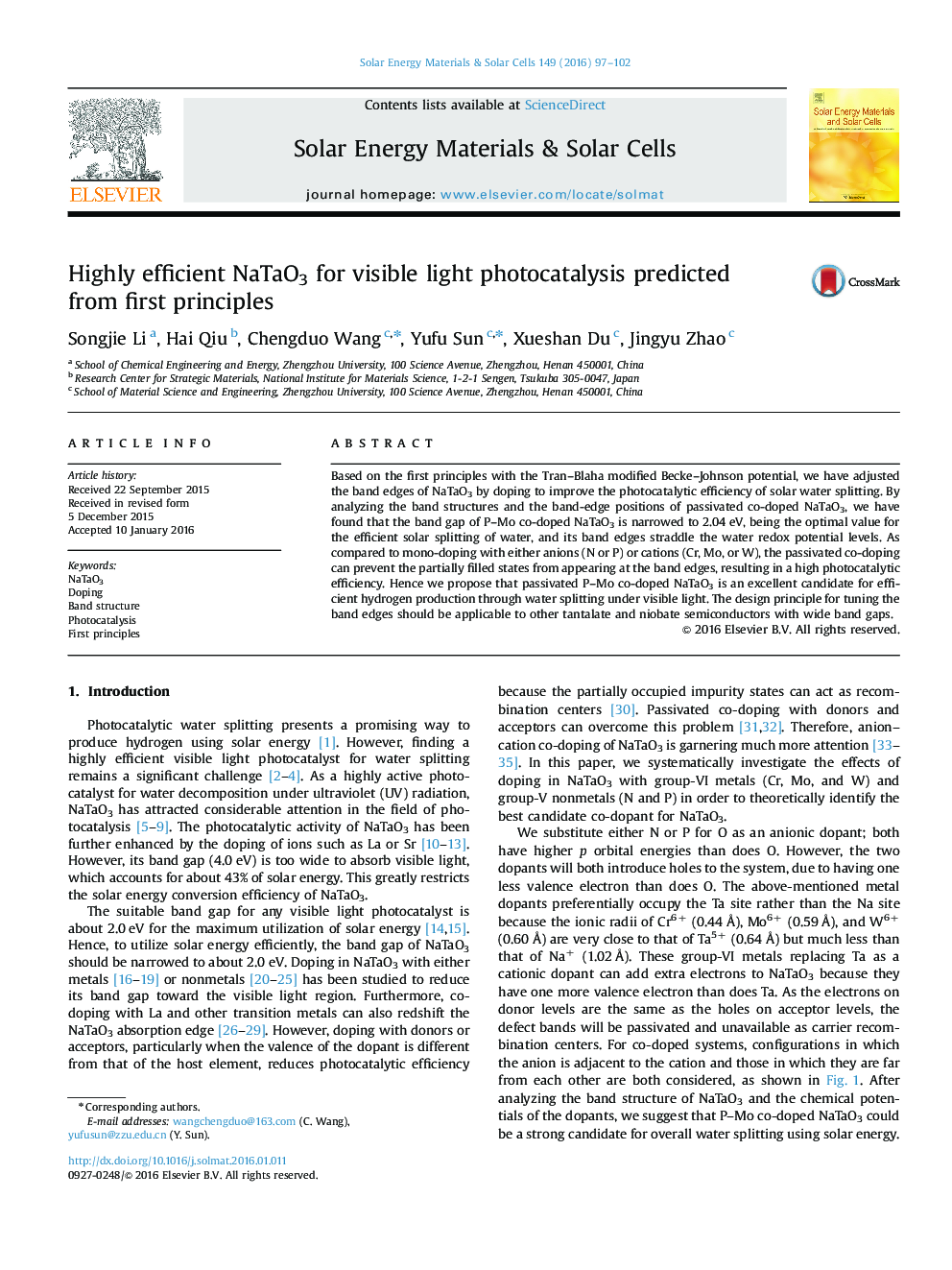| Article ID | Journal | Published Year | Pages | File Type |
|---|---|---|---|---|
| 6534746 | Solar Energy Materials and Solar Cells | 2016 | 6 Pages |
Abstract
Based on the first principles with the Tran-Blaha modified Becke-Johnson potential, we have adjusted the band edges of NaTaO3 by doping to improve the photocatalytic efficiency of solar water splitting. By analyzing the band structures and the band-edge positions of passivated co-doped NaTaO3, we have found that the band gap of P-Mo co-doped NaTaO3 is narrowed to 2.04Â eV, being the optimal value for the efficient solar splitting of water, and its band edges straddle the water redox potential levels. As compared to mono-doping with either anions (N or P) or cations (Cr, Mo, or W), the passivated co-doping can prevent the partially filled states from appearing at the band edges, resulting in a high photocatalytic efficiency. Hence we propose that passivated P-Mo co-doped NaTaO3 is an excellent candidate for efficient hydrogen production through water splitting under visible light. The design principle for tuning the band edges should be applicable to other tantalate and niobate semiconductors with wide band gaps.
Related Topics
Physical Sciences and Engineering
Chemical Engineering
Catalysis
Authors
Songjie Li, Hai Qiu, Chengduo Wang, Yufu Sun, Xueshan Du, Jingyu Zhao,
